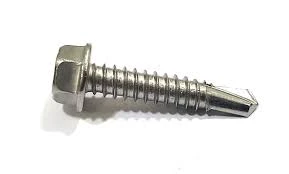Steel Stud Wall Bracing Solutions for Enhanced Structural Integrity
Understanding Steel Stud Wall Bracing
In modern construction, steel stud walls have gained significant popularity due to their durability, lightweight nature, and ease of installation. However, to ensure these walls can withstand various forces—such as wind, seismic activity, and other lateral loads—bracing is essential. This article explores the concept of steel stud wall bracing, its importance, methods of application, and benefits.
What is Steel Stud Wall Bracing?
Steel stud wall bracing refers to the techniques employed to reinforce steel stud walls to prevent lateral movement and maintain structural integrity. Bracing systems are designed to stabilize walls against forces that can cause them to sway or collapse. There are several methods to achieve effective bracing, including diagonal bracing, shear panels, and tension cables.
Importance of Bracing
Without proper bracing, steel stud walls are susceptible to deformation and failure when subjected to external loads. Such issues can compromise the safety and performance of a building. Bracing ensures that the walls remain upright and can effectively transfer loads to the foundation. This is particularly critical in areas that experience high winds or seismic activity, where the risk of damage is significantly elevated.
Types of Bracing Methods
1. Diagonal Bracing This is one of the most common forms of bracing used in steel stud walls. Diagonal braces are installed in a cross pattern, providing stiffening to the wall by distributing loads evenly. This method helps reduce shear forces and adds strength to the overall structure.
2. Shear Panels Shear panels are rigid panels made from materials like plywood, oriented strand board (OSB), or metal sheathing, which are attached to the studs. These panels help resist lateral forces by providing a solid surface that transfers loads directly to the structural framing.
steel stud wall bracing

3. Tension Cables In certain applications, tension cables can be utilized to create a tensioned system that stabilizes the wall. These cables are anchored at various points and work by counteracting the lateral forces acting on the wall.
Benefits of Steel Stud Wall Bracing
The implementation of bracing in steel stud walls offers several advantages
- Enhanced Structural Integrity Braced walls exhibit greater resistance to lateral forces, ensuring that buildings remain stable under adverse conditions.
- Cost-Effectiveness By preventing structural failures, bracing can reduce repair costs and extend the lifespan of the building.
- Flexibility in Design Bracing systems can be tailored to suit different architectural designs, allowing for creative freedom without compromising safety.
- Faster Construction Steel studs are lightweight and easier to handle compared to traditional materials. Bracing adds minimal time to the installation process, making it an efficient choice for builders.
Conclusion
In summary, steel stud wall bracing is a crucial component in modern construction. Its various methods ensure that structures can withstand lateral forces, thus enhancing safety and performance. As architects and builders continue to push the boundaries of design, understanding and implementing effective bracing techniques will remain paramount in creating resilient and durable buildings. Whether through diagonal bracing, shear panels, or tension cables, the importance of bracing can never be underestimated in the field of construction.
-
Weatherproof Plastic Expansion Anchors for OutdoorخبرونهJun.06,2025
-
Sustainability in the Supply Chain: Eco-Friendly TEK Screws ProductionخبرونهJun.06,2025
-
Load-Bearing Capacity of External Insulation FixingsخبرونهJun.06,2025
-
Double Head Bolts: Enhancing Efficiency in Industrial MachineryخبرونهJun.06,2025
-
Corrosion Resistance in Chipboard Screws: Coatings for Wholesale DurabilityخبرونهJun.06,2025
-
Butterfly Toggle Bolts : Enhancing Structural ResilienceخبرونهJun.06,2025
